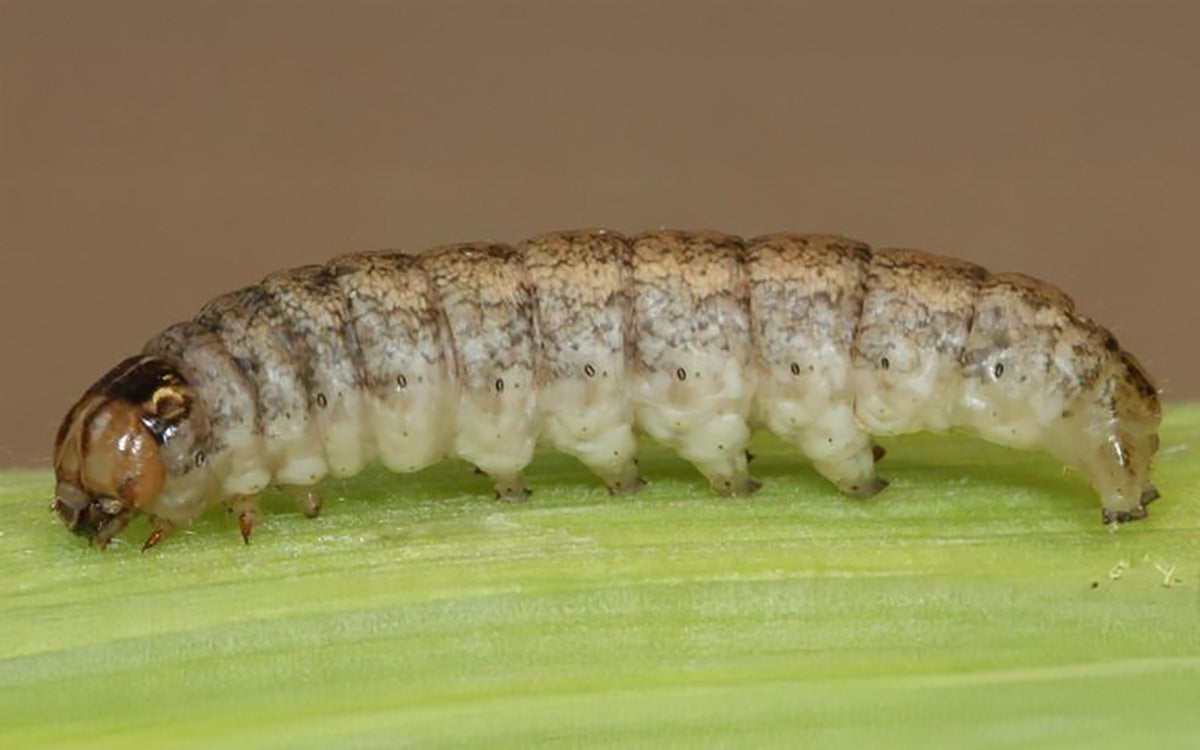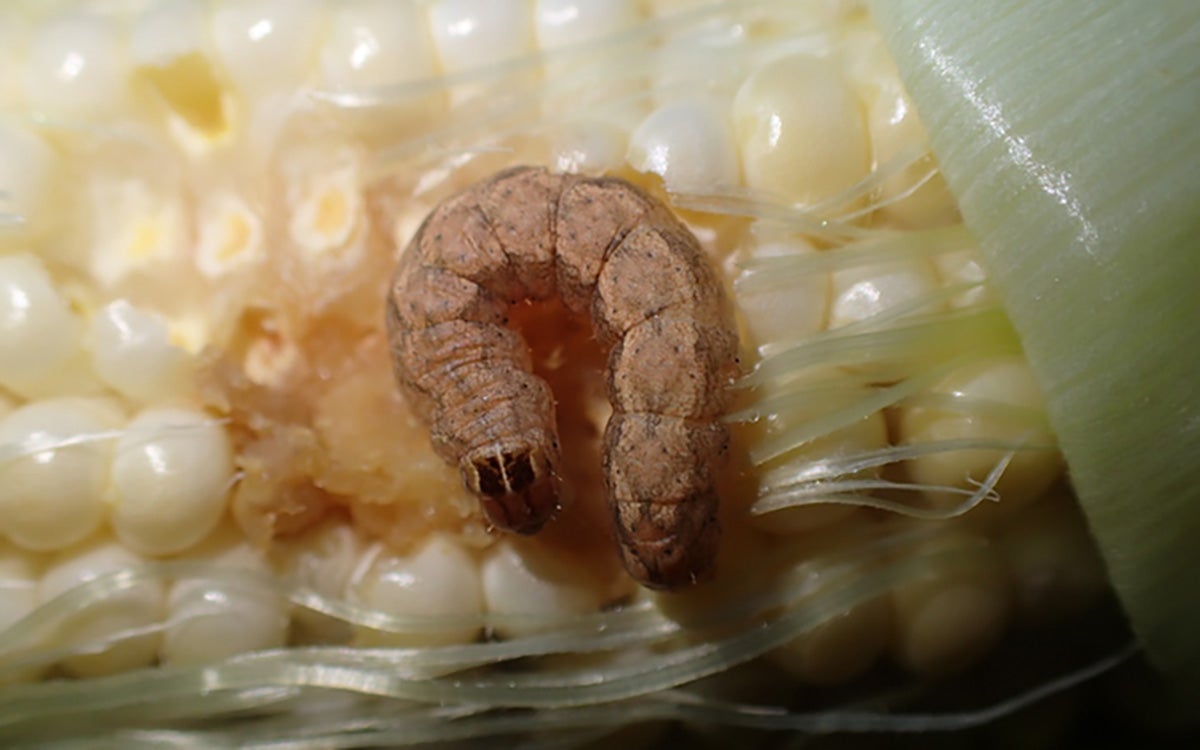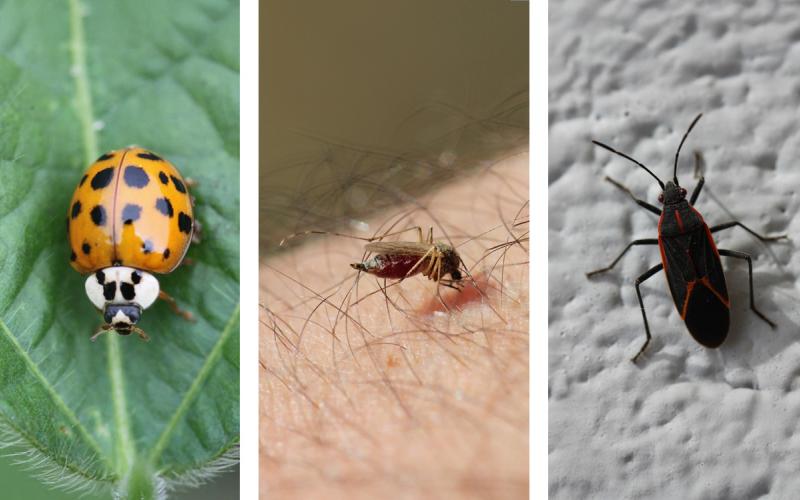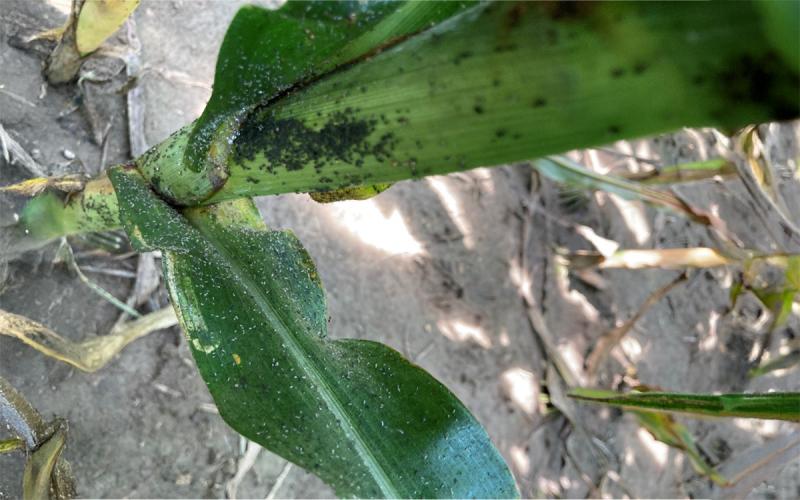Written collaboratively by Adam Varenhorst, Philip Rozeboom, Patrick Wagner, and Brad McManus.
Western bean cutworm caterpillars have been reported in South Dakota corn. To our knowledge, this is the first report of western bean cutworm on corn expressing the Cry1F protein in South Dakota. Due to regionally observed decreases in efficacy of the Cry1F protein it is no longer recommended for management of western bean cutworms in many neighboring states. The western bean cutworm can be effectively managed by the VIP3A Bt protein or well-timed foliar insecticide applications. For an explanation of Bt proteins that are included in the trait packages, please refer to the Handy Bt Trait Table.
The western bean cutworm caterpillars can cause yield loss by feeding on the tassels, silks, and ears. In addition, ear feeding activities increase the likelihood of secondary diseases and mold growth on the ear. During most years, western bean cutworms are not observed in South Dakota corn fields. The reports that we received were of late-stage caterpillars feeding on the ears. Research from Iowa and Nebraska has found that one caterpillar per ear can cause approximately 4 bushel/acre yield loss. Insecticide management for western bean cutworms needs to occur when egg masses are detected on the whorl or upper leaves. So, for this year in South Dakota, we are far past a point for insecticide management.
Identification
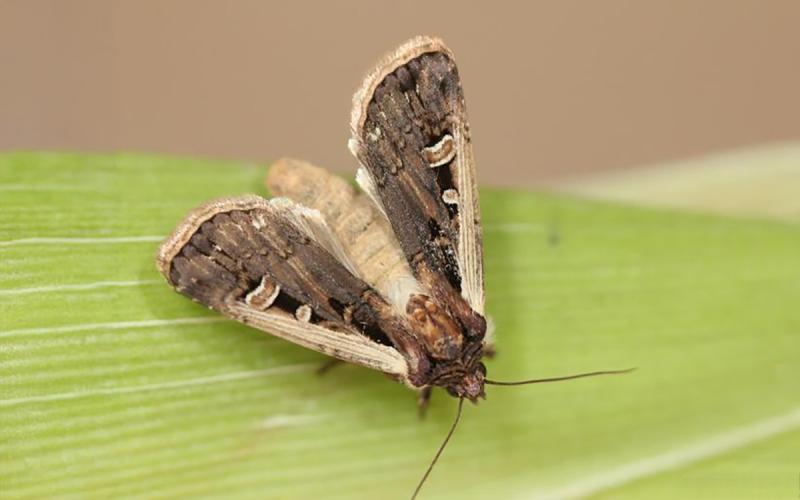
Moths
The western bean cutworm moth is gray, brown in color with a light-colored stripe on the edge of the front wing. The front wings also have a small brown circle marking with a light-colored outline and a brown comma-shaped marking with a light-colored outline (as illustrated in Figure 1).
Caterpillars
The western bean cutworm caterpillars vary in color by growth stage or instar. Newly hatched caterpillars have black head capsules that eventually turn orange as they grow.
The bodies are light tan with black markings (as shown in Figure 2). The area behind the head on late-stage caterpillars will have two black rectangles divided by a light-colored line (as seen in Figure 3).
